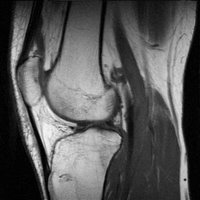Digital Imaging and Communications in Medicine (DICOM) is a comprehensive set of standards for handling, storing and transmitting information in medical imaging. It includes a file format definition and a network communications protocol. This protocol is an application protocol, it uses TCP/IP to communicate between systems. DICOM files can be exchanged between two entities that have the capability to receive the information - image and patient data - in DICOM format.
DICOM was developed to enable integration of scanners, servers, workstations and network hardware from multiple vendors into a picture archiving and communication system. The different machines, servers and workstations come with DICOM conformance statements which clearly state the DICOM classes supported by them. DICOM has been widely adopted by hospitals and is making inroads in smaller applications like dentist's and doctor's offices. DICOM is categorized into two different transmissions; DICOM Store and DICOM Print. DICOM Store is a format to send to a PACS System or Workstation. DICOM Print is a format to send to a DICOM Printer, normally to print an "X-Ray" film. Most vendors require individual licenses to perform these types of transmissions. This standard provides the sender image quality control over the image being sent.
DICOM File Format
DICOM files consist of a header with standardized as well as free-form fields and a body of image data. A single DICOM file can contain one or more images, allowing storage of volumes and/or animations. Image data can be compressed using a variety of standards, including JPEG, LZW and Run-length encoding (RLE).
DICOM differs from other data formats in that it groups information together into a data set. That is, an X-Ray of your chest is in the same file as your patient ID, so that the image is never mistakenly separated from your information. It also mandates the presence of a media directory, the DICOMDIR file, that provides index and summary information for all the DICOM files on the media.
DICOM restricts the filenames on DICOM media to 8 character names (sometimes 8.3). This is a common source of problems with media created by developers that did not read the specifications carefully. This is a historical requirement to maintain compatibility with older existing systems. The DICOMDIR information provides substantially greater information about each file than any filename could, so there is less need for meaningful file names. Inexperienced developers also tend to make mistakes regarding the various mandatory and optional information fields and format restrictions on files.
The first significant DICOM standard is version 3.0, which was developed in 1993. Details of the DICOM specification are available at the NEMA site, and many public domain and open source implementations exist. There is also an ongoing media exchange test and connectathon process for CD media that is organized by the IHE organization.


0 comments: